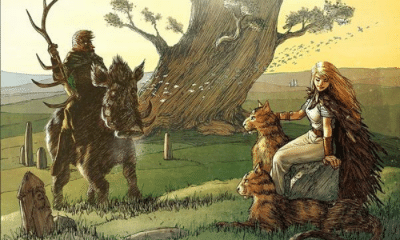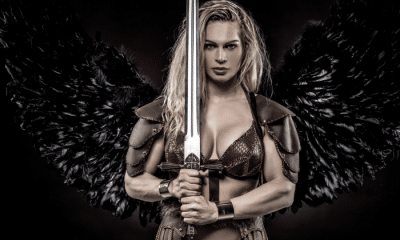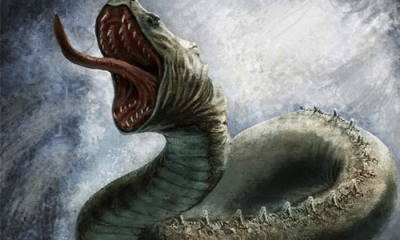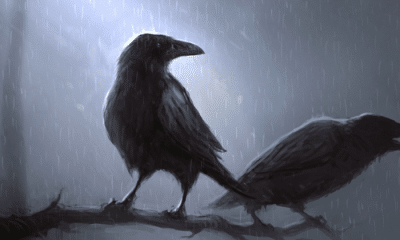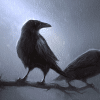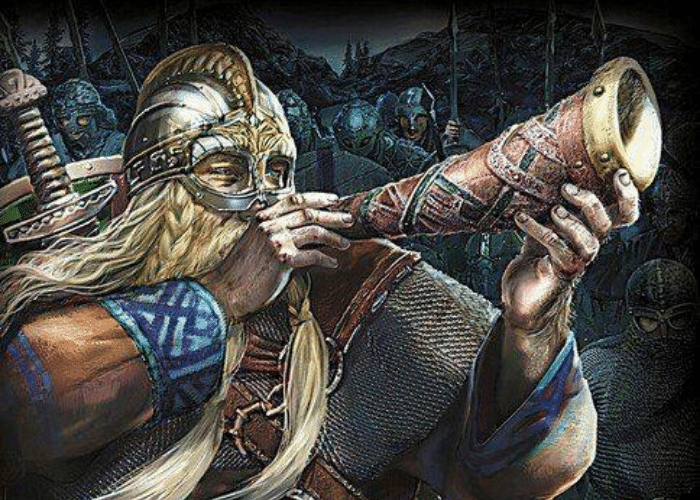
Norse
What Was the Gjallarhorn?
What Was the Gjallarhorn?
The Gjallarhorn is a famous object in Norse mythology, but what made Heimdall’s horn so important?
In the Prose Edda, the Gjallarhorn serves a very important purpose.
The god Heimdall guards the Bifröst, the rainbow bridge that connects the worlds of men and the gods. When Ragnarök begins, he will watch as legions of fire giants swarm over the bridge in an attempt to assault Asgard.
When he sees this, Heimdall will blow Gjallarhorn. The warhorn will be heard in all of the Nine Worlds and announce the beginning of the final battle of Ragnarök.
Before this, however, the Prose Edda says that the horn has another purpose. Before it announces war, the Gjallarhorn is used to drink the most valuable water in creation.
How can one horn be both the source of Odin’s wisdom and the omen of his death? Keep reading to find out!
Blowing the Gjallarhorn
The Gjallarhorn appears in Snorri Sturluson’s 13th century collection of Norse legends, the Prose Edda.
The horn is well-known for the role it plays in the prophecies of Ragnarök.
According to the Prose Edda, Gjallarhorn is in the possession of the god Heimdall.
Before Ragnarök officially begins, many things will happen in Midgard, the world of men. Three years of bitter winter will grip the land, killing most men and making the rest turn to theft and murder to survive.
As this long winter ends, the various bound monsters of legend will all break free. Loki and his son Fenrir will break their chains, Nidhogg will escape from Hel, and Jörmundgandr will pull itself out of the sea.
Midgard will then be invaded by enemies from other worlds Loki will bring frost giants and Hel will march forth with her wolf, Garmr, and legions of the dead.
The fire giants, or jötnar, will also come out of Muspelheim. They will burn the world behind them as they march to the Bifröst bridge under the leadership of Surt.
The rainbow bridge that connects Asgard, the home of the Aesir gods, and Midgard will buckle under the weight of the fire giants. As they reach the top, it will crumble.
Heimdall, guarding the bridge, will see this. When the fire giants march on the Bifröst, Heimdall will blow Gjallarhorn.
The horn is so loud that it can be heard across all the worlds. This will alter both the gods and their enemies that Ragnarök has officially begun.
While the Gjallarhorn is only named in later sources, at least two images from the archaeological record seem to attest to its existence.
Two stone crosses, one in England and one on the Isle of Man, show a large figure with a horn at its side. Both are theorized to be Heimdall in possession of the Gjallarhorn.
On the Gosford Cross in Cumbria, the figure holds a sword in addition to the horn and faces down two snake-like beasts with open mouths. Many historians interpret this as a depiction of Heimdall during Ragnarök.
Before Heimdall blows the Gjallarhorn to announce Ragnarök, however, it serves a much different purpose.
Far from the Bifröst bridge, at the roots of Yggdrasil, sits the disembodied head of Mímir.
The god of knowledge was beheaded by the Vanir as they and the Aesir ended the war between the gods. His body was not found, but his head was found and resurrected by Odin.
Mímir sits beside a well that has water imbued with his power. A single drink of this water has the power to reveal untold knowledge and make a person wiser than any man who has ever lived.
Odin sacrificed an eye to drink from this well just once. Mímir, however, drinks from it every day.
According to another passage in the Prose Edda, Mímir uses Gjallarhorn to drink from the Mímisbrunnr well each morning. The horn that will one day announce Ragnarök until then enables Mímir to give Odin wise advice whenever he is in need of it.
My Modern Interpretation
The Prose Edda never provides an explanation for why the same horn is used by both Mímir and Heimdall for very different purposes. No rationale is ever given for how Heimdall receives the horn or, for that matter, how Mímir uses it without a body.
Some scholars believe, however, that the appearance of the same horn in both contexts is not entirely unusual.
In early Germanic culture, both musical instruments and drinking vessels were made of the same material – horns.
Horns were blown during certain rituals and celebrations in honor of the gods. Toasts and libations were often given, so it is possible that the same horn would have been used for both purposes.
An example of this may be in a pair of well-known Danish artifacts, the Golden Horns of Gallehus. These ornate 5th century horns are believed by some to have been used in rituals, although their exact purpose remains unknown.
Another example is seen later in history, in the Old French Song of Roland. In this medieval work, the hero’s horn Olifont similarly serves as both a warhorn and a drinking horn.
If such horns were used in religious ceremonies, it is possible that Gjallarhorn represents a horn that was sacred to Odin.
In its use as a drinking horn, it is one of the sources of the god’s famous wisdom. Mímir gives Odin wise advice throughout his life, but Odin’s single drink from the well, presumably with the use of Gjallarhorn, is a major event in his development.
As a warhorn, however, Gjallarhorn is blown just once. It sounds doom for Odin and the rest of the world.
When Odin drank from Mímisbrunnr, he gained knowledge that helped him understand his fate. When the Gjallarhorn is blown, however, that fate comes to fruition.
The Gjallarhorn represents two aspects of Odin and his worship. The first is his pursuit of knowledge, the second is his status as a warrior. The knowledge gained in one act of the ritual, however, does not offset the fate that the other aspect announces.
A horn would logically be included in both stories, that of Ragnarök and that of the Well of Knowledge, because of the practical purposes horns served in Germanic culture. A horn would have been used both to drink from a well and to announce the beginning of a battle.
By naming them both as the same item, however, Snorri Sturluson opened up a new interpretation. The Gjallarhorn is not a simple, practical device, but is instead a ritual item that encompasses both aspects of Odin’s worship and the highs and lows of his story.
In Summary
In Norse mythology, the Gjallarhorn is best known as the instrument that will announce the beginning of Ragnarök. According to the Prose Edda, Heimdall will blow the powerful horn when Surt’s fire giants overrun the bridge that connects Midgard to the world of the gods.
Gjallarhorn is mentioned elsewhere in the Prose Edda, however. In an earlier passage, it is named as the horn from which Mímir drinks the Well of Knowledge’s magical waters.
It would not be unusual for a horn to be used for both purposes in Germanic culture. Examples can be found even in later medieval literature.
The fact that the horn is used for both purposes in the same mythology, however, leads some scholars to believe that it may have had a ritualistic purpose in the worship of Odin.
Odin was a god who represented both magical knowledge and strength in war. As it was used in both purposes, the Gjallarhorn may have symbolized both aspects of Odin as a god.
Horns may have been similarly used in Odin’s rituals in the Norse world. By serving a function as both a drinking vessel and a warhorn, the Gjallarhorn’s real-world counterparts may have been symbolically linked to Odin’s many powers.


